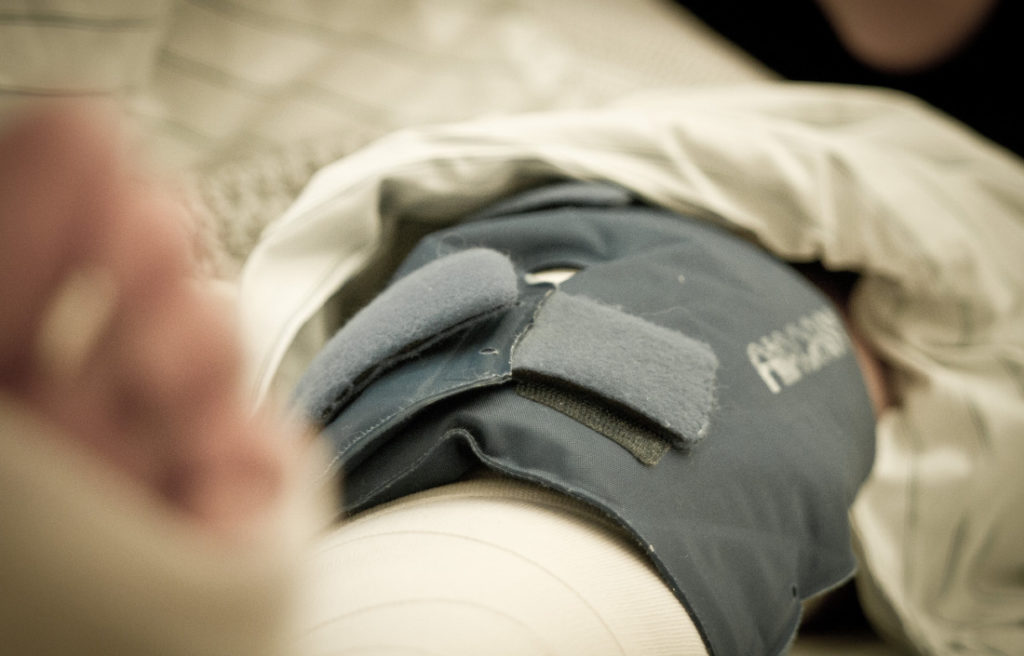A single measurement may help determine kneecap instability risk
Knee injuries can be a scourge to collegiate and pro athletes alike, but Penn State researchers say a single measurement taken by a clinician may help predict whether a person is at risk for knee instability.

Knee injuries
Knee injuries can be a scourge to collegiate and pro athletes alike, but Penn State researchers say a single measurement taken by a clinician may help predict whether a person is at risk for knee instability.
The researchers found that measuring the distance between the tibial tubercle (TT) – a bony bump on the tibia, commonly referred to as the shin, below the kneecap – and the trochlear groove (TG), the joint in which the kneecap sits, using magnetic resonance imaging (MRI) was a reliable, precise and accurate diagnostic of problems with the kneecap moving out of its joint.
John Vairo, clinical associate professor of kinesiology, orthopaedics and rehabilitation, said that ideally, a person’s kneecap will align with the midline of the leg – neither too far to the left or the right. A greater TT-TG distance may suggest that the kneecap is off center and therefore more likely to slip out of the joint.
Vairo said the study – recently published in Clinical Orthopaedics and Related Research – may help clinicians refine how they use the measurement in their practice.
“We found that once this measurement reaches 13 millimeters, that individual may be more likely to experience problems with kneecap dislocation,” Vairo said. “That being said, it’s also not the only thing that should be taken into account if a surgeon is considering more aggressive types of treatment like surgery to decrease this distance, which requires significant recovery time.”
According to the researchers, issues with kneecap stability are common, especially among women or people who engage in sports. They said it may not pose an issue for people who are not physically active, but more aggressive treatment – like surgery – may be required for athletes.
Vairo said that while clinicians had been using TT-TG distance to predict kneecap instability previously, best practices were unclear. He said that computed tomography (CT) scans have been most commonly used in the past, but some studies have suggested that TT-TG distances were measured differently depending on if a CT or MRI scan was done.
“A novelty to our study was that we wanted to test the reliability of this measurement using MRI in a setting that was more true to how it would be used in current day-to-day clinical settings,” Vairo said. “This routinely consists of the measurement being performed one time, often by a surgeon who may be considering surgery.”
The researchers used medical records from 131 patients — 48 who had confirmed cases of kneecap dislocation and 83 controls with meniscal tears. Three clinicians with various levels of experience used the patients’ MRI scans to measure TT-TG distance without knowing their diagnosis beforehand.
After analyzing the data, the researchers found that all three clinicians – regardless of experience – were able to reliably and precisely measure TT-TG distance. They also found that TT-TG distance tended to be greater in patients with kneecap instability.
“We also wanted to take it a step further and find an accurate distance that could be a good indication for determining likelihood of the condition,” Vairo said. “Other studies have used basic descriptive statistics to suggest various distances that could be a potential threshold for instability, but this approach limits the measurement’s application. We wanted to identify a specific number so that clinicians reading this paper can have practical information that they can judiciously use in patient care.”
The researchers pinpointed 13 mm as a guideline for identifying patients who might be at risk for kneecap instability.
“A TT-TG distance of 13 mm was found two times more frequently in individuals that truly do have this condition than those who don’t,” Vairo said. “At the same time, there were individuals with this condition who had measurements smaller than 13 mm, driving home the importance of knowing the details associated with different imaging techniques and being aware of other contributing factors to instability. Our paper proposes that using specific MRI scans in a standardized fashion may help produce more accurate readings of this measurement.”
In the future, Vairo said he and the other researchers will continue to explore factors that contribute to kneecap instability, including combining TT-TG distance with data about the depth and shape of the kneecap joint to better predict the condition.











